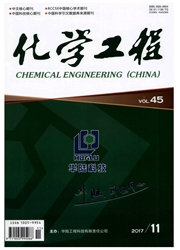

 中文摘要:
中文摘要:
建立了一个基于人工神经网络方法的基团键贡献模型,用于预测烷烃闪点。该模型既考虑了分子中基团的特性,又考虑了基团之间的连接性(化学键)。以16种烷烃基团键作为神经网络的输入参数,研究了44种烷烃的闪点与分子结构之间的相关性。结果表明,闪点预测值与实验值符合良好,绝对平均绝对误差6.0K,绝对平均相对误差2.15%,优于传统基团贡献法所得结果。该方法的提出不仅揭示了烷烃闪点与分子结构之间的定量关系,而且为工程上提供了一种预测有机物闪点的新的有效方法。
 英文摘要:
英文摘要:
A group bond contribution model using artificial neural networks was established to predict the flash points of alkanes. Information of group property and connectivity in molecules was contained in the model, and 16 group bonds were used as input parameters of neural networks to study the correlation of molecular structures with flash points of 44 alkanes. The results show that the predicted flash points are in good agreement with the experimental data, with the absolute mean absolute error being 6.0 K, and the absolute mean relative error being 2.15%, which are superior to those of traditional group contribution methods. The method proposed can be used not only to reveal the quantitative relation between flash points and molecular structures of alkanes but also to predict the flash points of organic compounds for chemical engineering.
 同期刊论文项目
同期刊论文项目
 同项目期刊论文
同项目期刊论文
 期刊信息
期刊信息
